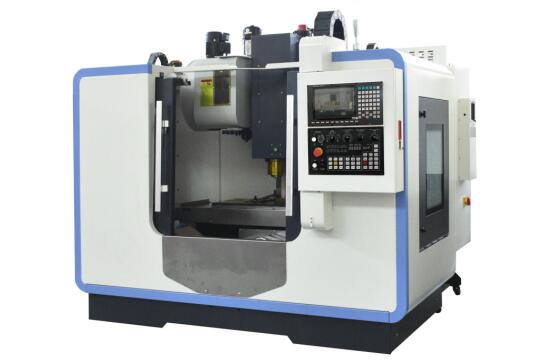We often hear that CNC machining centers are divided into hard rails and linear rails. When customers purchase machining centers, they will ask: Is hard rail or linear rail better? What is the difference between the two?
What is a hard rail? What is a linear rail?
Hard rail refers to the casting that the guide rail and the bed are integrated, and then the guide rail is processed on the basis of the casting. That is, the shape of the guide rail is cast on the bed, and then the guide rail is processed after quenching and grinding. There are also guide rails that are not necessarily integrated with the bed and the guide rail. For example, the inlaid steel guide rail is nailed to the bed after processing.
Machine tools using hard rails
Linear guides usually refer to rolling guides, which are the ones used in linear modules that are often used in the machine tool industry. We usually call such components “linear guides”. The linear guide itself is divided into two parts: the slide rail and the slider. There are balls or rollers with inner circulation in the slider, and the length of the slide rail can be customized. It is a modular component, which is a standardized and serialized separate product produced by a specialized manufacturer, which can be installed on the machine tool and can be disassembled and replaced after wear. Most of the machine tools in the field of finishing use high-precision linear rails as machine tool guides, which also greatly guarantees the machining accuracy of the machine tools. The imported ones include German Rexroth and Japanese THK, and the domestic ones that do better are Nantong. Vertical and horizontal machine tools, Hanjiang rail, Taiwan Shangyin, etc.
Machine tools using linear guides
Is the machining center better with hard rails? Or with linear rails?
In fact, there is nothing good or bad about hard rails and linear rails. It can only be said that they are suitable or not, because their focus is different. Let’s take a look at their respective pros and cons.
1. Advantages, disadvantages and applications of hard rails
The hard rail has large sliding contact surface, good rigidity, strong shock resistance and strong load-bearing capacity, which is suitable for heavy-duty cutting.
The hard rail belongs to dry friction. Due to the large contact surface, the friction resistance is also large, and the moving speed cannot be too fast. At the same time, it is easy to cause crawling, and the existence of gaps on the moving surface will lead to machining errors. The maintenance of the machine tool track is the top priority. Once the track is not sufficiently lubricated, it will cause the track to burn or wear out, which is fatal to the accuracy of the machine tool.
The application of hard rail is suitable for heavy cutting, large molds, high hardness workpieces, and workpieces with general accuracy requirements.
2. Advantages, disadvantages and applications of wire rails
Nowadays, many machine tools run extremely fast, especially the idle speed, which is largely due to the credit of the line rails; the line rails can be preloaded to achieve zero clearance between the rails, with high precision; in terms of service life, the line Rails are much higher than hard rails.
The cutting force of the line rail is smaller than that of the hard rail, but for the hard rail, in fact, the line rail of many machine tools has greatly improved its carrying capacity.
The application of the line rail is suitable for high-speed machine use, high-speed cutting, suitable for processing products and small precision molds. More precision machining centers today use linear rails.



